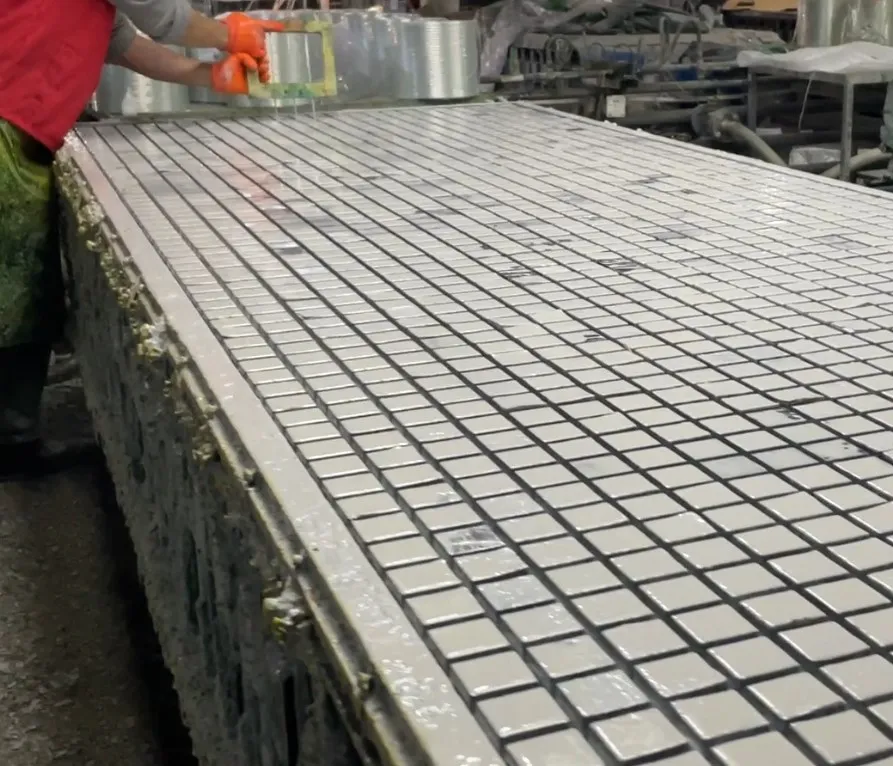loading...
- No. 9, Xingyuan South Street, Dongwaihuan Road, Zaoqiang County, Hengshui, Hebei, China
- admin@zjcomposites.com
- +86 15097380338
- Welcome to visit our website!
grp gratings
Understanding GRP Gratings A Comprehensive Overview
GRP gratings, or Glass Reinforced Plastic gratings, have gained significant attention across various industries due to their unique properties and myriad of applications. These gratings are manufactured by combining resin with reinforcing glass fibers, creating a versatile product that outperforms traditional materials like steel and aluminum in many respects. This article delves into the advantages, applications, and manufacturing processes of GRP gratings, shedding light on why they are increasingly being favored in different sectors.
Advantages of GRP Gratings
One of the most prominent benefits of GRP gratings is their exceptional strength-to-weight ratio. Unlike steel, GRP gratings are lightweight, making them easier to transport and install. This characteristic significantly reduces labor costs associated with handling and installation. Moreover, their corrosion resistance is a game-changer, particularly in environments exposed to harsh chemicals and corrosive elements. This resilience means that GRP gratings can have a much longer lifespan compared to traditional metal gratings, resulting in lower maintenance costs over time.
Another noteworthy advantage of GRP gratings is their electrical insulating properties. In environments where electricity is a concern, such as power plants and chemical processing facilities, GRP gratings provide a safe footing, eliminating the risks of electrical shocks. Additionally, they are non-slip, which is crucial for enhancing safety in industrial settings, where workplace accidents can lead to significant liability issues.
Moreover, GRP gratings are highly customizable. Available in various colors and sizes, they can be tailored to meet specific project requirements, accommodating diverse aesthetic and functional needs. This adaptability is particularly appealing for architects and designers looking to incorporate these gratings into their projects seamlessly.
Applications of GRP Gratings
The versatility of GRP gratings allows for applications across a wide range of industries. One of the most common uses is in the construction and building industry, where they are employed for walkways, platforms, and stair treads. Their lightweight nature and corrosion resistance make them ideal for rooftop applications and drainage systems.
grp gratings

Moreover, the chemical industry has seen a significant uptake of GRP gratings. Their resistance to many chemicals makes them an ideal choice for flooring in factories and laboratories where spills are common. Similarly, water treatment facilities use GRP gratings for their durability and ability to withstand the harsh conditions associated with wastewater treatment processes.
The pharmaceutical industry also benefits from GRP gratings, especially in cleanroom environments where cleanliness and safety are paramount. The non-porous nature of GRP helps maintain sterile conditions, while their easy-to-clean surfaces reduce the risk of contamination.
Marine applications are another area where GRP gratings excel. With their resistance to seawater and UV rays, GRP gratings are often utilized in docks, piers, and walkways in harbors. Their lightweight yet robust construction ensures that they can withstand the constant exposure to harsh marine environments.
Manufacturing Process
The manufacturing of GRP gratings involves a series of intricate steps. Generally, the process begins with the selection of high-quality fiberglass and resin. The resin is mixed with a hardener and then combined with glass fibers to create a composite material. This mixture is then poured into a mold that defines the size and shape of the grating.
Once the material hardens, it is removed from the mold, trimmed, and tested for quality control. The final product is often subjected to various treatments to enhance its surface properties, such as anti-slip coatings or UV inhibitors, which extend the grating's lifespan even further.
Conclusion
In summary, GRP gratings represent a remarkable advancement in engineering materials, offering unmatched durability, versatility, and safety features. Their applications span multiple industries, and their benefits far outweigh the limitations when compared to traditional materials. As industries continue to evolve and prioritize safety, efficiency, and sustainability, GRP gratings are set to play an increasingly vital role in the future of construction and manufacturing.
-
The Rise of FRP Profiles: Strong, Lightweight, and Built to LastNewsJul.14,2025
-
SMC Panel Tanks: A Modern Water Storage Solution for All EnvironmentsNewsJul.14,2025
-
GRP Grating: A Modern Solution for Safe and Durable Access SystemsNewsJul.14,2025
-
Galvanized Steel Water Tanks: Durable, Reliable, and Ready for UseNewsJul.14,2025
-
FRP Mini Mesh Grating: The Safer, Smarter Flooring SolutionNewsJul.14,2025
-
Exploring FRP Vessels: Durable Solutions for Modern Fluid HandlingNewsJul.14,2025
-
GRP Structures: The Future of Lightweight, High-Performance EngineeringNewsJun.20,2025
